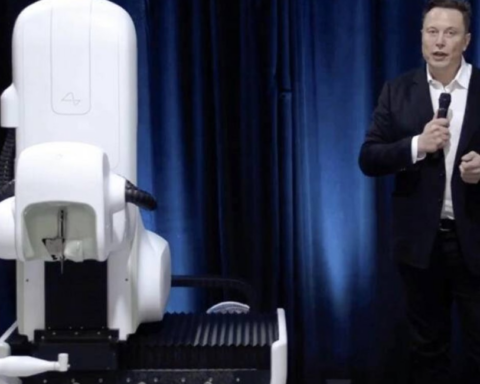 A startup Tuesday unveiled technology it claims can can simultaneously charge multiple different devices in a house, even through walls and around corners, by using the same radio spectrum as other wireless standards, such as Wi-Fi and Bluetooth.
A startup Tuesday unveiled technology it claims can can simultaneously charge multiple different devices in a house, even through walls and around corners, by using the same radio spectrum as other wireless standards, such as Wi-Fi and Bluetooth.
“You don’t have to put that device in every room. You just put it into one room in your house and it will power all your devices,” said Hatem Zeine, founder of Ossia, developer of the technology. “It’s like your Wi-Fi signal. If you can get a Wi-Fi signal, you’ll be able to get power.”
 After six years of development, Ossia unwrapped the new Cota wireless charging technology that it says will be available to consumers and enterprises by 2015. Zeine, demonstrated the technology with a prototype at the TechCrunch Disrupt technology conference in San Francisco this week.
After six years of development, Ossia unwrapped the new Cota wireless charging technology that it says will be available to consumers and enterprises by 2015. Zeine, demonstrated the technology with a prototype at the TechCrunch Disrupt technology conference in San Francisco this week.
In a video posted by TechCrunch, Zeine held a 2-inch by 2-inch by 1-inch cube-shaped dongle device, plugged it into an iPhone 5 via a standard charging cable and held it in the air until the device indicated it was wirelessly charging; the audience erupted in applause. “For me, wireless means remote, automatic, effortless,” Zeine told the audience.
The Cota wireless charging system includes a wireless charger and a wireless charger receiver — either a dongle device or tech integrated into a product, such as a smartphone or battery. While it has yet to be miniaturized, Zeine said the wireless technology will eventually be small enough to fit onto the motherboard of a smart phone or even in a AAA battery.
Zeine said the wireless charging technology should appeal to enterprises, such as oil and gas companies, where removing power wires from equipment could lead to greater safety. “Imaging the impact of Cota on the medical, retail, and the hundreds of devices [that] we call the Internet of things. The possibilities are endless,” he added.
The wireless charging technology can deliver 1 watt of power at a 30-foot distance. It would to span an entire home and could power multiple devices, Zeine said.
“Cota is inherently safe, as safe as your Wi-Fi hub,” Zeine said. “A Cota-enabled device sends out a beacon signal that finds paths to the charger, which in turn returns the power signal through only those open paths back to the receiver, avoiding people or anything that absorbs its energy.”
The Cota wireless charging does not depend on line of sight, that is, it can go through walls and around corners without interfering with other electronic equipment in its path, Zeine said.
According to Zeine, the Cota wireless charging technology was discovered by accident. While experimenting with wireless signal management, Zeine, a physicist, discovered that it’s possible to focus a signal on a receiving device.
Zeine said his company currently holds four core patents issued by the U.S. patent office, as well as others issued internationally. He plans on licensing the technology to equipment makers. He said Ossia is already discussing the technology with some companies.
The Cota consumer transmitter would sell for around the same price as a Wi-Fi hub, “basically $100 or a little more”, Zeine said.
While Zeine may believe his technology is without compare, there are competitors, though most use ether tightly or loosely coupled magnetic induction technology based on the Qi standard or magnetic resonance technology, which can wirelessly charge over a very short distance (millimeters).
The Qi (pronounced “chee”) standard, developed by the Wireless Power Consortium (WPC), enables inductive or pad-style charging and short-distance (1.5cm or less) magnetic resonance charging. The specifications are supported by a list of 166 companies that reads like a who’s who of electronics, such as LG Electronics, Sony Corp. Nokia and Verizon Wireless.
WiTricity, based on Watertown, Mass., has developed its own flavor of wireless charging that works at a longer distance than 1.5cm and through solid objects.
David Schatz, director of business development at WiTricity, calls the company’s technology highly resonant wireless power transfer.
Schatz has demonstrated how a prototype WiTricity wireless charger, called “Prodigy,” can power a device from about 10 inches away. The black, oval-shaped Prodigy charger looks much like any charging pad told in stores. It sells for $995 and is now essentially a demo kit for engineers, researchers and entrepreneurs who would use it to develop their own charging products.
WiTricity is one of several start-ups that are part of yet another wireless power association, thePower Matters Alliance (PMA). The PMA’s members include prestigious players such as Duracell Powermat, developer of the most widely used wireless charging technology. Powermat is used, for example, in Starbucks coffee shops to allow patrons to charge their enabled smart phones and tablets on tabletops.
Then there’s the Alliance for Wireless Power (A4WP), a rival group that’s backed by Qualcomm and Samsung. The 50-plus members of A4WP also includes Broadcom, Haier, Intel, LG Electronics, and SanDisk.
The A4WP technology also claims spatial freedom, offering a larger charging field. That means multiple devices, such as a tablet or smartphone, can be placed on the same pad and charged at the same time.
Cota wireless charging technology is currently only available as a prototype. The pillar-shaped device demonstrated by Zeine appeared to be about 6 feet high and contained 200 transmitters. The device was hidden behind a curtain during the demonstration at TechCrunch’s Disrupt show.
Cota said once the technology is miniaturized and no longer based on “off the shelf electronics,” the development team will fit 20,000 transmitters into an 18-in cube box. “The more transmitters, the higher the efficiency,” he said.
The charger can come in the form of a dongle that can be plugged into a device via a USB port or another connector, or charging technology can be integrated into a device’s circuitry. The Cota wireless charger delivers about 1 watt or about one-third the power a device would get being charged from a USB power signal.
Cota said that once the technology is licensed to developers and manufacturers, he envisions that it could power anything — a cell phone, a remote control, a game controller, Bluetooth headsets, or flashlights.
“Just think, this could forever eliminate that annoying chirp from the mystery smoke detector with a dying battery at 3 in the morning,” Zeine said.








